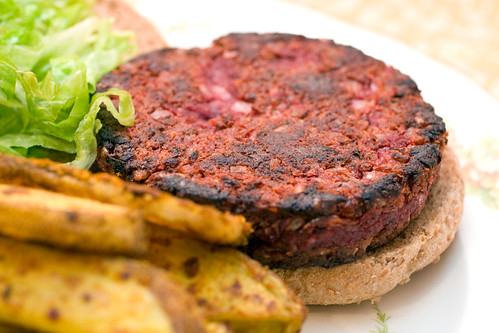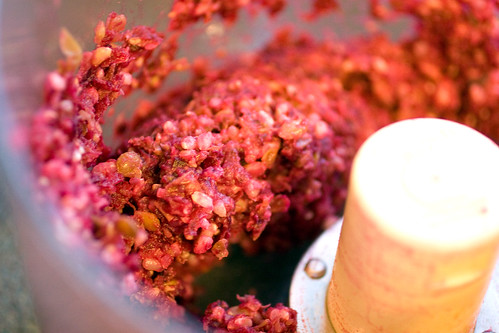That said, even lazy bean-cooks need some rules. I have two.
1. Go for dried beans
There’s a time and a place for canned beans, such as this amazing black bean soup that’s thinned out with chicken broth and enriched by partially puréeing the beans. But if you want a simple pot of whole beans in a rich, starchy gravy, the slow release of starch from dried beans is the best way to get there. Don’t worry—as long as you soak your beans ahead of time and cook them thoroughly, they won’t turn out tough.
2. Don’t forget the aromatics
Beans need a balance of aromatics to enhance and contrast their earthy flavor. For most cooks, that means starting with a simple mix of garlic and onion. I use these in abundance but also take a page from Cuban cuisine with the addition of an orange. Yes, a whole one: sliced in half, juice squeezed into the pot, and then I throw in the hulls, too. The orange simmers along with the beans, garlic, and onion, bringing a slightly floral, slightly citrusy sweetness to the broth. That peel adds a subtle bitterness that emphasizes the beans’ earthy flavor.
One note: make sure to use a sweet juicing orange instead of a sour or bitter variety. Too much acidity can keep your beans from softening properly.
How to Cook Dried Black Beans
Update 9/11/14: In an earlier version of this post I mentioned soaking black beans to speed up their cooking time. But Kenji’s since shown that not soaking your beans beforehand actually improves their color, texture, and flavor, while only modestly increasing the cooking time (while saving you eight to 12 hours of soaking). So in true lazy cook fashion, rinse your beans, put them in a large pot with your garlic, onion, and orange, and cover them with several inches of water.
But wait? Shouldn’t you sauté your garlic and onion first for better flavor distribution first? Nope! I tested both options: sautéing garlic and onion in a little olive oil before adding beans and cooking, and cooking the beans with raw whole onion, garlic, and orange all at once. Tasters were evenly split on the two pots, with a slight preference for the beans that didn’t use pre-cooked aromatics.
The way I see it, when you’re making pot beans, you’re making beans. The beans should be front and center. Sautéing the garlic and onion sweetened their flavors to the point where they walked all over the beans, and the oil in the pot brought the orange’s citrus sweetness to the fore when it should be a background player. At the end of the day, it’s a slight difference, but leaving your aromatics whole and raw means less prep time and marginally beanier beans.
Resist the urge to stop cooking them and let them simmer until they turn completely creamy. You want proper pot beans? Give them time.
Once your beans are simmering, they don’t need much attention at all. Keep the heat low and the water level above their heads so they cook evenly. Stir them every now and then. But for the most part, dried beans cook themselves. At some point, the beans will seem “done,” but still somewhat al dente. Resist the urge to stop cooking them and let them simmer until they turn completely creamy. You want proper pot beans? Give them time. Just how long is hard to say, and depends on the age of your beans and some other factors. But I don’t start cooking dried beans without at least an hour to kill, and usually more like two or three.
(Hey, I said this would be the laziest way. Not the fastest.)
Once the beans are completely creamy, increase the heat a little to reduce the cooking liquid into a thick gravy, keeping in mind it’ll thicken more as the beans cool. Remove your onion and orange and add salt to taste now that the gravy is properly reduced. You’ll notice in these photos that some of the beans have blown out, a common sign of beans that haven’t been salted in a pre-cook soak. And you know what? That’s fine by me—they still taste great, and that extra starch thickens the sauce nicely.
Now that you have your beans, it’s time to ask yourself the only hard question of the day: what do I serve them with?
The answer: everything.






